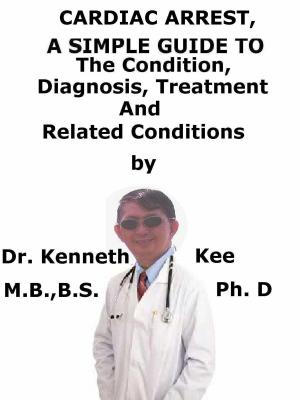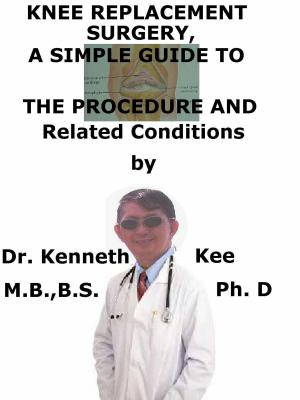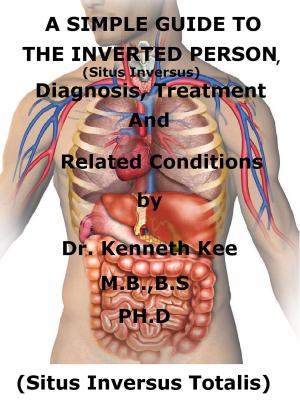Diabetic Nephropathy, A Simple Guide To The Condition, Diagnosis, Treatment And Related Conditions
Nonfiction, Health & Well Being, Medical, Specialties, Internal Medicine, Nephrology, Health, Ailments & Diseases, Diabetes| Author: | Kenneth Kee | ISBN: | 9781370179251 |
| Publisher: | Kenneth Kee | Publication: | October 12, 2017 |
| Imprint: | Smashwords Edition | Language: | English |
| Author: | Kenneth Kee |
| ISBN: | 9781370179251 |
| Publisher: | Kenneth Kee |
| Publication: | October 12, 2017 |
| Imprint: | Smashwords Edition |
| Language: | English |
Diabetic nephropathy is a form of kidney damage that often happens over time in people with diabetes.
People with diabetes are at higher risk of renal atherosclerosis, urinary tract infections, papillary necrosis and glomerular lesions (e.g., from basement membrane thickening and glomerulosclerosis)
Diabetic nephropathy may be diffuse or nodular (Kimmelstiel-Wilson lesion).
The early stages produce a raised glomerular filtration rate with enlarged kidneys but the principal feature of diabetic nephropathy is proteinuria.
This forms insidiously, beginning as intermittent micro-albuminuria before going on to constant proteinuria and occasionally nephrotic syndrome.
Kidney injury tends more likely if the patient can:
1. Have uncontrolled blood sugar
2. Have high blood pressure
3. Have type 1 diabetes that started before the patient was 20 years old
4. Have family members who also have diabetes and kidney problems
5. Smoke
6. Be African American, Mexican American, or Native American
Symptoms
Frequently, there are no symptoms as the kidney damage begins and slowly becomes worse.
Kidney injury can start 5 to 10 years before symptoms begin.
People who have serious and prolonged (chronic) kidney disease may have symptoms such as:
1. Fatigue most of the time
2. General ill feeling
3. Headache
4. Nausea and vomiting
5. Poor appetite
6. Swelling of the legs
7. Itchy skin
8. Easily develop infections
Diagnosis
The doctor will require tests to detect signs of kidney disorders.
A urine test looks for a protein called albumin and sugar leaking into the urine.
Too much albumin in the urine is frequently a sign of kidney injury.
This test is also called a microalbuminuria test because it measures small amounts of albumin.
The doctor will also examine the blood pressure.
High blood pressure injures the kidneys and is difficult to control when the patient have kidney damage.
A kidney biopsy may be required to confirm the diagnosis or look for other causes of kidney damage.
If the patient has diabetes, the doctor will also examine the kidneys by using these blood tests every year:
1. Blood urea nitrogen (BUN)
2. Serum creatinine
Renal biopsy may sometimes be necessary.
Other investigations for monitoring of diabetes are:
1. Glycosylated hemoglobin (HbA1c) and
2. Serum lipids.
Any increased albumin excretion rate in type 2 diabetes is often an indication of general vascular damage rather than specific renal damage.
Treatment
When kidney damage is identified in its early stages, it can be slowed down with treatment.
Once bigger quantities of protein appear in the urine, kidney injury will slowly get worse.
The patient should follow the doctor’s advice to keep the disorder from getting worse.
Control the blood Pressure
Maintaining the blood pressure under control (below 130/80 mm Hg) is one of the best methods to slow kidney damage.
The doctor may give medicines to lower the blood pressure and protect the kidneys from more damage.
These medicines, even when the blood pressure is in a healthy range, assist slowing kidney damage.
Control the Blood Sugar Level
The patient can also slow kidney damage by regulating the blood sugar level through:
1. Eating healthy foods
2. Getting regular exercise
3. Consuming medicine or having the insulin injection as instructed by the doctor
Reviewing the blood sugar level as instructed
Good Glucose control must be done
ACE inhibitors considerably decrease the risk of all-cause mortality for patients with diabetic kidney disease
Urine albumin and serum creatinine levels should be monitored regularly.
TABLE OF CONTENT
Introduction
Chapter 1 Diabetes Nephrology
Chapter 2 Causes
Chapter 3 Symptoms
Chapter 4 Diagnosis
Chapter 5 Treatment
Chapter 6 Prognosis
Chapter 7 Renal Failure
Chapter 8 Nephrotic Syndrome
Epilogue
Diabetic nephropathy is a form of kidney damage that often happens over time in people with diabetes.
People with diabetes are at higher risk of renal atherosclerosis, urinary tract infections, papillary necrosis and glomerular lesions (e.g., from basement membrane thickening and glomerulosclerosis)
Diabetic nephropathy may be diffuse or nodular (Kimmelstiel-Wilson lesion).
The early stages produce a raised glomerular filtration rate with enlarged kidneys but the principal feature of diabetic nephropathy is proteinuria.
This forms insidiously, beginning as intermittent micro-albuminuria before going on to constant proteinuria and occasionally nephrotic syndrome.
Kidney injury tends more likely if the patient can:
1. Have uncontrolled blood sugar
2. Have high blood pressure
3. Have type 1 diabetes that started before the patient was 20 years old
4. Have family members who also have diabetes and kidney problems
5. Smoke
6. Be African American, Mexican American, or Native American
Symptoms
Frequently, there are no symptoms as the kidney damage begins and slowly becomes worse.
Kidney injury can start 5 to 10 years before symptoms begin.
People who have serious and prolonged (chronic) kidney disease may have symptoms such as:
1. Fatigue most of the time
2. General ill feeling
3. Headache
4. Nausea and vomiting
5. Poor appetite
6. Swelling of the legs
7. Itchy skin
8. Easily develop infections
Diagnosis
The doctor will require tests to detect signs of kidney disorders.
A urine test looks for a protein called albumin and sugar leaking into the urine.
Too much albumin in the urine is frequently a sign of kidney injury.
This test is also called a microalbuminuria test because it measures small amounts of albumin.
The doctor will also examine the blood pressure.
High blood pressure injures the kidneys and is difficult to control when the patient have kidney damage.
A kidney biopsy may be required to confirm the diagnosis or look for other causes of kidney damage.
If the patient has diabetes, the doctor will also examine the kidneys by using these blood tests every year:
1. Blood urea nitrogen (BUN)
2. Serum creatinine
Renal biopsy may sometimes be necessary.
Other investigations for monitoring of diabetes are:
1. Glycosylated hemoglobin (HbA1c) and
2. Serum lipids.
Any increased albumin excretion rate in type 2 diabetes is often an indication of general vascular damage rather than specific renal damage.
Treatment
When kidney damage is identified in its early stages, it can be slowed down with treatment.
Once bigger quantities of protein appear in the urine, kidney injury will slowly get worse.
The patient should follow the doctor’s advice to keep the disorder from getting worse.
Control the blood Pressure
Maintaining the blood pressure under control (below 130/80 mm Hg) is one of the best methods to slow kidney damage.
The doctor may give medicines to lower the blood pressure and protect the kidneys from more damage.
These medicines, even when the blood pressure is in a healthy range, assist slowing kidney damage.
Control the Blood Sugar Level
The patient can also slow kidney damage by regulating the blood sugar level through:
1. Eating healthy foods
2. Getting regular exercise
3. Consuming medicine or having the insulin injection as instructed by the doctor
Reviewing the blood sugar level as instructed
Good Glucose control must be done
ACE inhibitors considerably decrease the risk of all-cause mortality for patients with diabetic kidney disease
Urine albumin and serum creatinine levels should be monitored regularly.
TABLE OF CONTENT
Introduction
Chapter 1 Diabetes Nephrology
Chapter 2 Causes
Chapter 3 Symptoms
Chapter 4 Diagnosis
Chapter 5 Treatment
Chapter 6 Prognosis
Chapter 7 Renal Failure
Chapter 8 Nephrotic Syndrome
Epilogue















